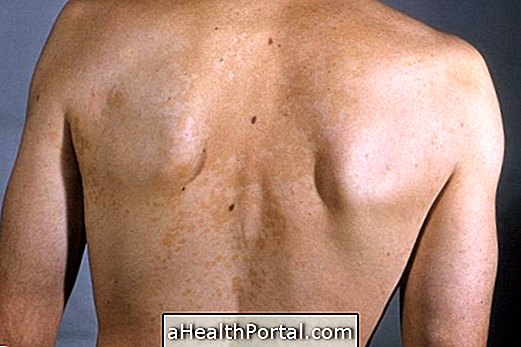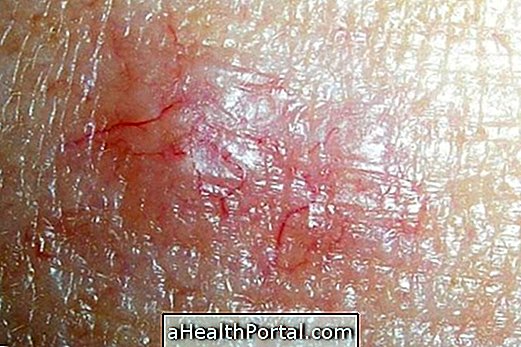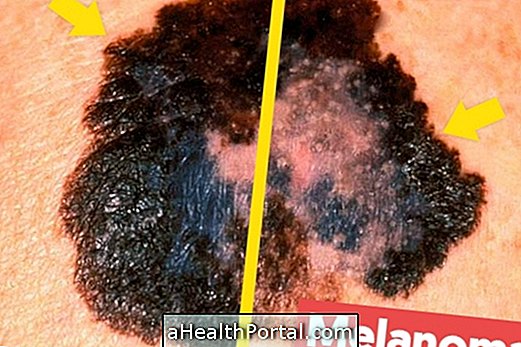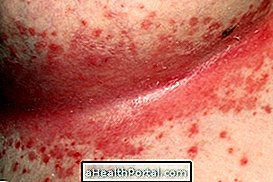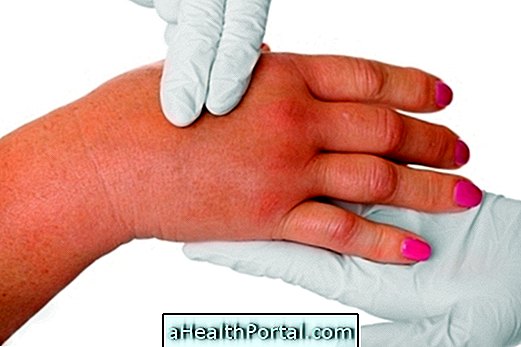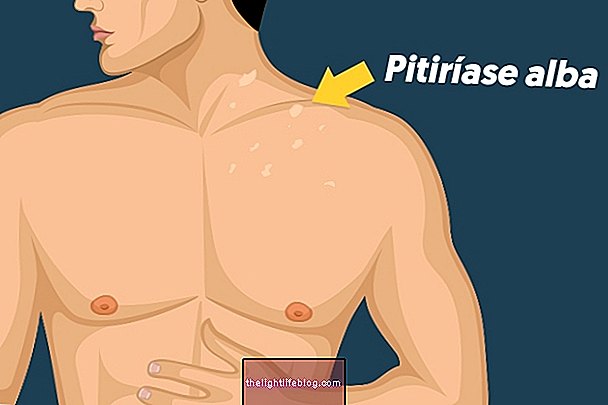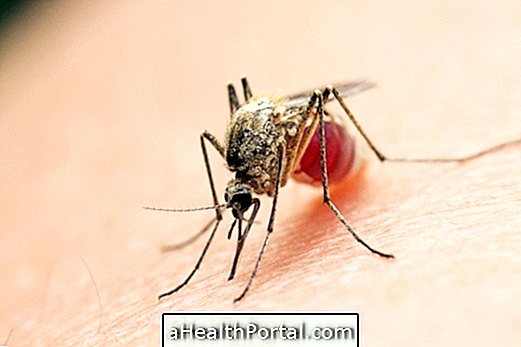Dark spots that appear on the face, hands, arms or other parts of the body can be caused by factors such as sun exposure, hormonal changes, acne or skin sores.
But in more severe cases, they may also indicate skin cancer, so you should be aware of its characteristics, when they appeared, and how long it has been there. Whenever a spot increases in size, has different colors or is growing, one should go to the dermatologist so that he can examine with a special light. It is also recommended to see a doctor if the blemish does not have a definite and troublesome cause.
You can watch this video to learn how to identify and treat the types of skin blemishes we listed in the text below:

How to make dark spots on the skin
To treat dark spots on the skin it is necessary to consult a dermatologist to identify the specific type of spot and start the appropriate treatment. However, at home it is possible to try to identify the stains through some characteristics like color, shape or place where it arises, for example. The following are the 6 most common spot types:
1. Stains caused by the sun

It is the most frequent type of dark spot on the face, arms or legs and appears due to sun exposure over the years, and is therefore common after 45 years of age. Usually, this type of blemishes can become darker over the years if you do not protect your skin daily with sunscreen.
- How to treat: Skin exfoliation done twice a week may help remove the lighter and more superficial blemishes. However, the use of laser or intense pulsed light is a good way to tone the skin. In addition it is very important to use sunscreen daily so as not to darken the existing spots and so that no new spots appear.
2. Pregnancy spots

Melasma is a type of dark spot on the skin of the face that develops after prolonged periods of sun exposure and can therefore also appear after a sunburn, for example. Melasma is also very common during pregnancy due to hormonal changes, however, in these cases it is known as chloasma gravidarum.
- How to treat: You should apply sunscreen daily on the skin with a minimum protection factor of 30, avoid prolonged exposure to the sun during the hours of high heat. Using moisturizing cream enriched with vitamin C is the maximum that can be done during the pregnancy. If stains do not lighten by themselves after the baby is born, treatments such as laser or diamond peeling or with acids, for example, may be used. See what care you should take during the treatment of melasma.
3. Seborrheic keratosis
Seborrheic keratosis is a type of high, dark signal that appears on the skin due to the natural aging process and is usually benign and does not present any type of health hazard.
- How to treat: They should always be evaluated by a dermatologist to circumvent skin cancer, since they can be confused. Usually, no treatment is needed, but the doctor may use a minor surgery to remove the signal.
4. Stains after acne or chicken pox
Post-inflammatory hyperpigmentation is a type of dark spot arising after lesions on the skin and therefore are very common in regions of the body that have suffered burns, acne, chicken pox or have been subjected to aggressive skin treatments.
- How to treat: lighter patches can be alleviated with a superficial peeling; however, darker patches can only be lightened with depigmenting creams, such as rosehip oil. Another option is to make a peeling with acids because it will remove the superficial and intermediate layer of the skin, giving rise to a new, stain-free. Here's how to do this kind of treatment in Chemical Peeling.
5. Diabetes stains

Black or mongrel people who have diabetes usually develop a type of dark spot on the skin that appears mostly around the neck and in the skin folds. These limbs are caused by the use of oral antidiabetics or some hormonal changes like hypothyroidism or polycystic ovaries, for example.
- How to treat: To lighten the skin you can perform an exfoliation with liquid soap and sugar once a week, but to lose weight and practice physical exercises are very important for the success of the treatment, because this can cure type 2 diabetes and not need more antidiabetic drugs that are the main risk factor for these blemishes. See what else can be done to eliminate this type of stain.
6. Stains on the hands caused by lemon

Dark spots that may appear on the hands or arms due to contact with lemon followed by sun exposure such as caipirinha and sunbathing, for example, can be treated with skin lightening creams.
Dark spots on the skin that are caused by lemon are called phytophotomelaniasis, and can take 2 or 3 days to appear. To eliminate the ideal is to thoroughly wash the stained skin and always put sunscreen on top of the stain so that it does not get even darker. The tendency is for the lemon stain to brighten over time, but it can take up to 4 months to disappear.
- What to do: You should apply a whitening cream or lotion such as those containing vitamin C, for example. These can be purchased at pharmacies or aesthetic product stores.
Find out why this type of blemish can appear here.
7. How to Lighten Freckles
Freckles are common in fair-skinned people and usually appear on the face, arms and arms, and tend to get darker in the summer when sun exposure is greater. To clarify the freckles one can also use whitening creams or lotions containing hydroquinone, for example, but as they are a genetic trait they usually do not disappear completely. Some home options are:
- Use homemade cream by mixing 1 can of cream, 1 tube of hypoglyphs, 1 ampoule of vitamin A and 1 glass of almond oil daily, and
- Use the following homemade mask prepared with 1 egg white, 1 tablespoon of magnesia milk and 1 liquid bepantol cap. Apply the mixture to the skin for 30 minutes and wash with water then. This mixture should be applied every other day for about 3 to 4 weeks.
In addition, it is also advisable to always wear the sunscreen, with SPF 15, daily on the face, arms and hands, to protect the skin from the harmful effects of the sun, avoiding the darkening of the freckles that already exist.
How To Recognize Skin Cancer

Normally, skin cancer appears as a small dark spot that grows over time, presenting various colors and irregular shape. To know if a skin spot may be skin cancer, it should be noted that:
- The stain is well separated from any other and is isolated;
- If the stain is more than 6 mm and irregular edges;
- If there is more than 1 color in the same spot, with bluish tint, for example.
How to treat: It is advisable to consult a dermatologist as soon as possible to start the appropriate treatment and have a better chance of cure.
All care helps to lighten dark spots on the skin at home. However, they should always be done under the guidance of a dermatologist. In addition, when the spots do not diminish after 1 month of treatment it is advisable to return to the doctor to make a new evaluation and start the appropriate treatment.
Thus, it is important to be aware of any type of dark spot that appears on the skin and that was not present from birth, because if it increases over time, changes shape or changes any characteristic, it should be evaluated by a dermatologist to identify the problem and start the appropriate treatment.

